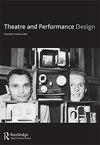Curtain, gong, steam: Wagnerian technologies of nineteenth-century opera
Q2 Arts and Humanities
引用次数: 0
Abstract
Two famous images from the fi rst production of Wagner ’ s Der Ring des Nibelungen at Bayreuth in 1876 are often reproduced side by side. One is an engraving after Josef Ho ff mann ’ s idealised design for the opening scene of Das Rheingold , showing the watery Rhinemaidens merging fl uidly with their surroundings, whilst the dwarf Alberich leers at them from a rock. The second depicts the reality of the scene seen from backstage, in which the less-than-sylph-like singers are strapped uncomfortably atop crude trollies being trundled around by stage hands. The two images exemplify Wagner ’ s frustration with the gap between his ideal image of his music dramas and what was practically achievable in the theatre of his day, despite the fact that he had built his own theatre, customised to ful fi l his dream, at Bayreuth. grease , ’ famous the ‘ mystic gulf ’ Wagner ’ s vision when, scene the music drama, with its sequence of unrealisable actions (Brünnhilde leaping into Siegfried ’ s funeral pyre on her horse, the Rhine submerging the stage, and the fi nal con fl agration of the gods in Valhalla), Konwitschny brought the front curtain down, and Wagner ’ s wordy instructions for the representation of fi nal Armageddon were instead projected onto the curtain, scrolling up as the music depicted the absent catastrophe – an act幕布、锣、蒸汽:19世纪瓦格纳式的歌剧技术
1876年,瓦格纳的《尼伯龙根的指环》在拜罗伊特的第一部作品中,两幅著名的图像经常被并排复制。其中一个是根据约瑟夫·霍夫曼为《莱茵河畔》的开场所做的理想化设计而雕刻的,画中水灵灵的莱茵少女与周围的环境流畅地融合在一起,而矮个子的阿尔伯里奇则在岩石上斜眼看着她们。第二幅画描绘了从后台看到的真实场景,不像仙女的歌手们被不适地绑在粗糙的手推车上,由舞台工作人员推着走来走去。尽管瓦格纳已经在拜罗伊特建造了自己的剧院,以实现他的梦想,但这两个形象表明瓦格纳对他理想中的音乐剧形象与当时剧院实际可实现的差距感到沮丧。瓦格纳的“神秘的海湾”,著名的“油脂”,当场景的音乐戏剧,其不可实现的动作的顺序(br nhilde跳进她的马齐格弗里德的葬礼的柴堆,莱茵河淹没了舞台,并最终在瓦尔哈拉众神的集合),Konwitschny拉下了前面的窗帘,瓦格纳的冗长的指示代表最后的世界末日被投射到窗帘上。向上滚动,音乐描绘了缺席的灾难——一种行为
本文章由计算机程序翻译,如有差异,请以英文原文为准。
求助全文
约1分钟内获得全文
求助全文
来源期刊

Theatre and Performance Design
Arts and Humanities-Visual Arts and Performing Arts
CiteScore
0.40
自引率
0.00%
发文量
14
 求助内容:
求助内容: 应助结果提醒方式:
应助结果提醒方式:


